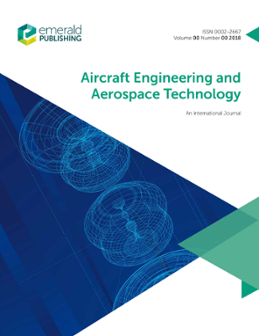Aircraft Engineering and Aerospace Technology: Volume 3 Issue 8
Strapline:
An International JournalTable of contents
Applied Load Factors: What Forces are Aeroplanes Required to Meet?
IN this issue appears a summary of a paper prepared by two of the research workers of the National Advisory Committee for Aeronautics which is most opportune. A number of minds…
Compression‐Ignition Engines: A Return to Fundamentals in a Comparison with the Petrol Engine
H.T. TizardTHE compression‐ignition aircraft engine has arrived in practical form, but the question whether it has come to stay, or rather, whether it will completely displace the petrol…
Aeroplane Speed Characteristics: An Attempt to Elucidate Theory in Practical Terms for the Aeroplane Pilot
Captain P. DupuyAMONG the various elements which condition heavier‐than‐air flight, speed is well known to be one of those which most deserve attention because of its fundamental effect on…
Steel Tube and Strip: The Works of Armstrong‐Whitworth Aircraft at Coventry Visited and Described
G.H. HandasydeBEFORE describing the methods used in the construction of Armstrong‐Whitworth aircraft, it is necessary to describe briefly both the types built and the conditions under which…
Aeroplane Accidents in U.S.A.: An Analysis of the Causes of Accidents in Civil Flying During the Past Three Years
A DECREASE in the number of passenger fatalities and an increase in the number of miles flown per passenger fatality in miscellaneous flying operations for the period July to…
Corrosion Tests in Germany: Tentative Standard Methods laid down by the Aluminium Board of the Reichsauschuss für Metallschultz
Georg GoldbachIN all corrosion tests, it should be noticed carefully that both the material and the attacking agent conform fully to service conditions. A section, for instance, must be tested…
Applied Load Factors in Bumpy Air: A Preliminary Study in the Light of the Meteorological Data at Present Available
Richard V. Rhode, Eugene E. LundquistFROM the standpoint of the structural design of transport or “non‐acrobatic” aeroplanes, which never need be subjected to manoeuvres more severe than the very mild turns, etc.…
Fuselage Interference Effect: The Available Data points to Conclusions Favourable to the High Wing in Monoplanes
A.S. HartshornIT has been found by model tests that the lift of a combination of an aeroplane body and a wing is not in general equal to the sum of the lifts of the two components when tested…
Air Ministry Contracts: List of Firms with Whom Orders Were Placed During the Month of May
The following list of contracts placed by the Air Ministry during May is taken from the June issue of the Ministry of Labour Gazette:—
Research Work in England: A Guide to the Work Carried out by the Aeronautical Research Committee
Engines GENERAL I.C.E. 3. Starting of Engines in aircraft. April 1917. (3d.).
Research Reports and Memoranda
Under this heading are published regularly abstracts of all Reports and Memoranda of the Aeronautical Research Committee, Reports and Technical Notes of the U.S. National Advisory…
Month in the Patent Office: A Selection of the More Important Aircraft and Engine Specifications Published Recently
In aircraft engines, the explosion pressures are maintained within safe limits at low altitudes by means of a stop device which is automatically adjusted according to the altitude…
Recent Technical Developments: A Hand Air‐Compressor—New “Brico” Foundries—The Air‐Cooled Engine Defended—The Cyanide Process
AN AIR‐COMPRESSOR FOR STARTING The difficulties and uncertainties encountered in starting the average aero‐engine by direct cranking are too well‐known to need elaboration. The…

ISSN:
0002-2667Online date, start – end:
1929Copyright Holder:
Emerald Publishing LimitedOpen Access:
hybridEditor:
- Prof Phil Webb